How to plan for water security and drought resilience
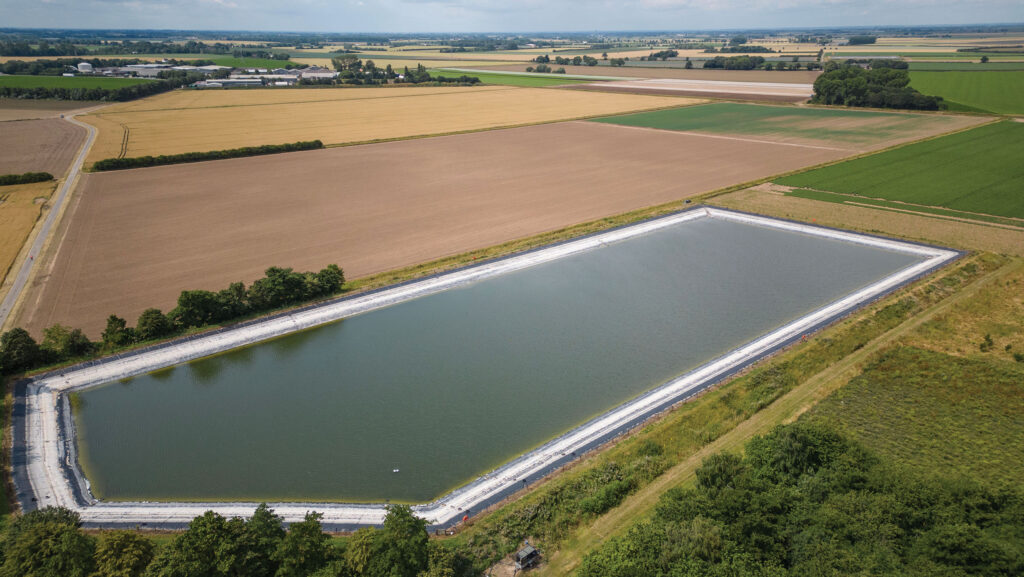 © Tim Scrivener
© Tim Scrivener It has been much wetter than average this year, but our changing climate means that prolonged dry spells are tipped to become more frequent.
Extreme drought years are expected to become the norm and farmers are being urged to take steps to improve the sector’s resilience.
Average summer rainfall and river flows could decline by 25% and 45% respectively by 2050, according to Met Office projections, creating an urgency to put things in place that help with water scarcity and high temperatures.
If the world continues to create high levels of emissions, the projections suggest that winters will become 1-4.5C warmer and up to 30% wetter, summers will be 1-6C warmer and up to 60% drier, while hot summer days will be 4-7C warmer.
The optimal temperature for humans is 15-20C, with those working outside starting to suffer heat effects from 27C.
For animals, heat stress starts to kick in as temperatures reach the upper 20s.
Crops start to suffer at 30C, with wheat yields dropping by 4% for each degree above 32C.
Water scarcity
At the same time, demand for water will rise in every sector of society, as higher temperatures increase water requirements for crops and livestock, while population growth drives up water demand from domestic users.
Climate change, increased demand and the need to protect the environment mean that up to an extra 6.2bn litres of water will be needed in change to the UK every day by 2050.
Pressures on water will be greatest in the south and east of England, where the UK grows much of its higher value crops and where agriculture is already struggling to cope with risks posed by water scarcity, says Dr Timothy Foster of the University of Manchester.
“In 2022, the UK experienced its fifth driest summer since 1836,” he points out.
“Along with record-breaking temperatures, this led to severe drought conditions resulting in reductions in crop yields and harvested areas.”
While it might seem strange to be talking about drought after one of the wettest winters and springs on record, he believes the UK needs to make significant changes to the way water is managed and shared.
“Not only does farming need a louder voice in the debate around water, we need reforms to abstraction rules and investment in new water infrastructure.
“We also need more flexibility with water managing and sharing arrangements, like those that exist in other countries where water scarcity pressures have been present for some time.”
Capturing water
This is a view shared by others, including the NFU, which points out that the UK has enough water to produce food – it’s just not always in the right place at the right time.
The union believes we must get better at capturing and storing water, as well as moving it around.
This means an abstraction system that allows for excess water capture and more on-farm reservoirs, which would benefit farmers as well as wider society.
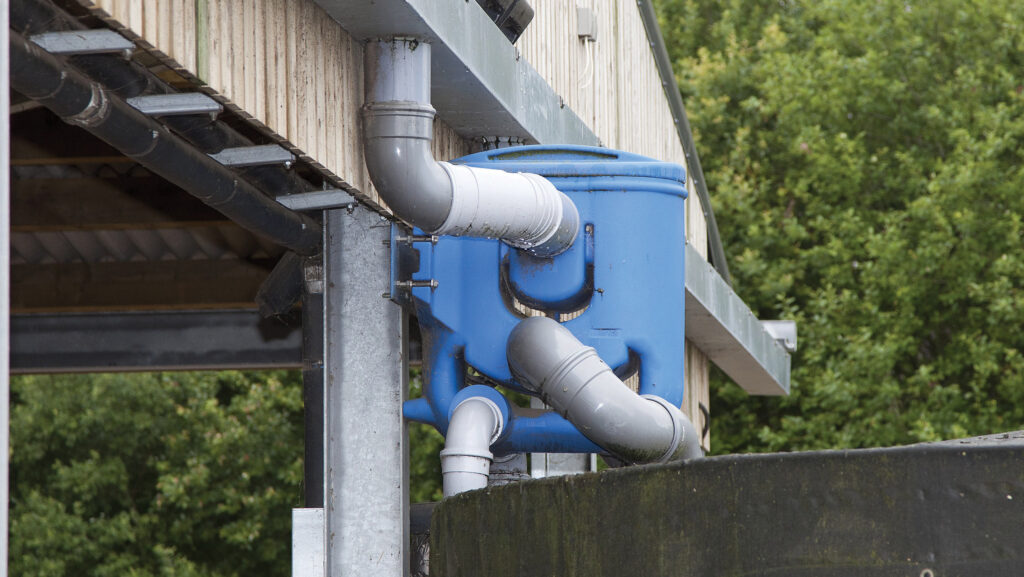
© Jonathan Page
As a result, the NFU made it one of its election requests and is waiting to see how the new government responds.
Until this happens, there are measures that farmers can introduce to help. There are various short and long-term ways to make your land less vulnerable to water shortages:
- Soil health – healthy soils with a higher organic matter content are able to hold more water, helping in a dry period, but also have better water infiltration rates in wet conditions. Organic matter includes fresh plant residue, such as litter and decaying roots, plus decomposing crop residue and manures.
- Soil cover – keeping soils covered helps to reduce water loss by evaporation and also protects the soil from wind and water erosion. In addition, residue management has a role in preventing the soil from drying out and from over-heating, as well as for suppressing weeds.
- Cover crops – incorporating cover crops into the rotation helps with drought resilience in many ways, from contributing to soil cover to introducing deep-rooted species that help to break up the soil, improving drainage and reducing run-off, while accessing water from depth. They can also be retained and then ploughed in as a green manure, adding organic matter.
- Multispecies swards – livestock farms are benefiting from the introduction of multispecies swards and herbal leys, as they bring different tolerances to changing water levels. In drought conditions, deeper rooting species such as chicory can still access water.
- Reduced tillage – reducing soil disturbance helps to increase the organic carbon content of the soil, allowing soil organic matter to accumulate and soils to become more resilient. Reduced or no-till practices also help to improve soil function and allow the soil biology to thrive, while limiting moisture loss.
- Rotational changes – crops that require less water, such as rye and grain maize, or those that have a shorter growing season, could be considered by growers on drought-prone land. In addition, crops that can be planted and harvested later, or varieties that offer greater drought tolerance, may have a part to play.
- Rainwater harvesting – installing a system to catch the rainwater that drains from shed roofs and other farm infrastructure, before being stored on-site in tanks, makes sense for most farms. On arable units, the water tends to be used for spraying, while on livestock farms it can be used to wash down and clean yards.
- Tree planting – targeted tree planting will add organic matter to the soil, boosting water retention and helping combat drought conditions. Trees also provide shade and shelter, reducing heat stress and heat exposure in livestock. Evidence also suggest that shelterbelts of native trees help crops to use water more efficiently.
- Irrigation efficiency – moving from traditional irrigation practices to systems that have better water use efficiency, such as sprinkler and micro-irrigation equipment, can see water use efficiency levels increase up to 95%. Drip irrigation, for example, delivers water straight to the plant’s root zone, minimising evaporation and run-off losses.
- Farm borehole – farms at the mercy of an erratic mains water supply may be able to install their own borehole, subject to certain conditions. In general, the higher your water use, the more you have to gain, as farm boreholes can save money and improve output. Up to 20,000 litres/day can be used at no charge – those with greater demand require an abstraction licence.
Farm water supplies
- Mains water – supplied by wholesalers as part of the public supply network.
- Abstracted water – taken from rivers, streams, ponds, wells and boreholes.
- Water harvesting/recycled water – caught from roofing or captured to be reused, often after storage.
- Stored water – held in reservoirs, ponds and tanks.
- Emergency water supplies – from specialist companies providing tankered water.
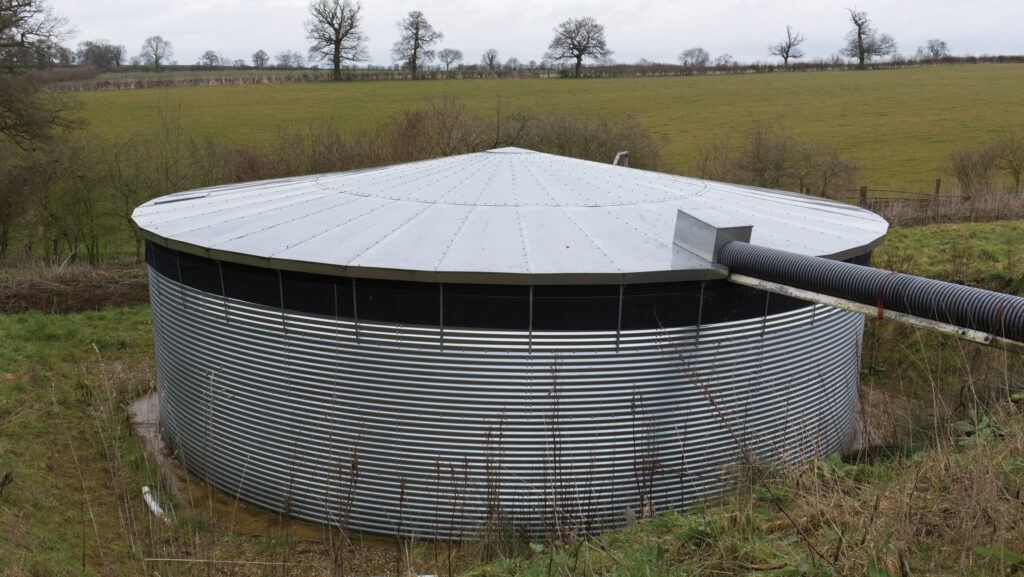
© Tim Scrivener
What government funding exists for water management on farms?
Sustainable Farming Incentive (SFI)
Among the 102 actions that are now in the expanded SFI 2024 offer are 21 high-priority actions, which are deemed as having the biggest environmental impact.
Two of those relate specifically to drought resilience and attract higher payment rates.
“Manage grassland for flood and drought resilience and water quality” is a 10-year action worth £938/ha.
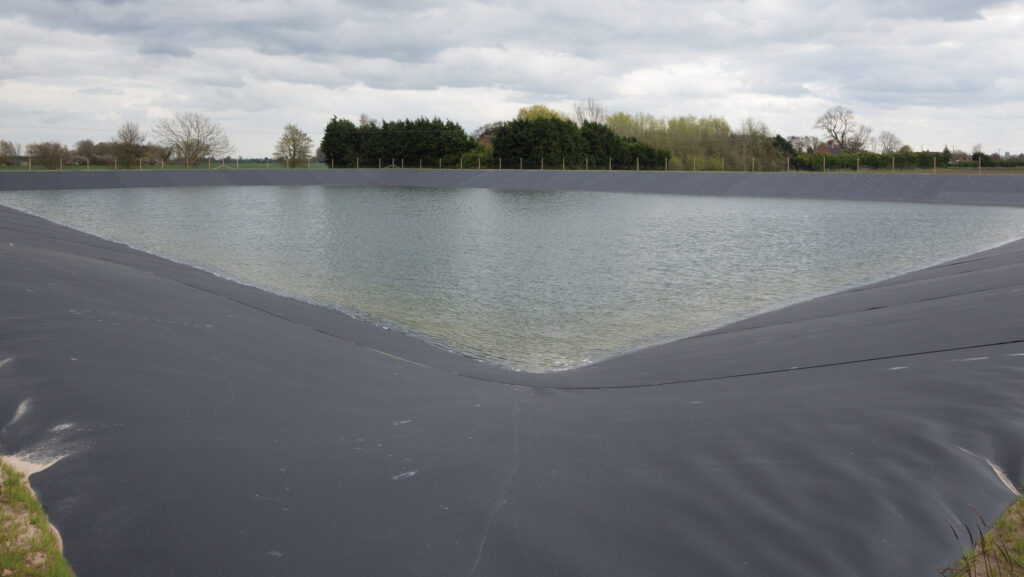
© Tim Scrivener
To qualify, grassland has to be managed to reduce run-off from rainwater, as well as to store more surface and groundwater through changes such as creating topographical features.
“Manage features on arable land for flood and drought resilience and water quality” is a five-year action, with a payment rate of £1,241/ha.
In it, features on arable land, such as sediment traps, bunds, swales and their surrounding areas, are managed to reduce run-off from rainwater and store more surface and groundwater.
Managing Water Resources Fund
A new £1.6m fund launched by the government in April 2024 offers support to groups of farmers to work together to store water and protect against the impact of drought.
It can be used by farmers to investigate different methods of managing water, with projects such as multi-farm reservoirs, treated waste water recycling schemes and water trading/sharing schemes all being encouraged.
The fund will support about 20 studies as well as investigating water demand and availability in the most water-stressed areas over the next 25 years.
Applications opened in April 2024, with groups of two or more neighbouring farms eligible to apply.
It is hoped that the fund will help to identify opportunities that build on the success of existing projects, such as the Felixstowe Hydrocycle and the Lincoln Water Transfer.
Water Management Grant (Round 2) – up to £500,000
The second round of the grant is under way, with those invited to make a full application following the first step to check eligibility having until the end of October 2024 to submit their plans.
Open to horticultural and arable businesses, the grant is to pay for capital items for a project that helps improve farm productivity through more efficient use of water and to secure water supplies for crop irrigation.
In the main, that means support for building on-farm reservoirs, but it also covers the adoption of best-practice irrigation techniques and irrigation infrastructure. Up to £10m in funding is available, with grants of £35,000 up to a maximum of £500,000 per applicant business on offer.
If relevant, the necessary planning permission and abstraction licences have to be in place before a full application is submitted.
Eligible capital items include:
- Equipment for more efficient water application, such as changing from rain guns to trickle or boom irrigation
- Securing water supply for crop irrigation that allows more sustainable water use, such as constructing an on-farm reservoir
- Improving business resilience and prosperity, such as new irrigation systems or newly irrigated areas
- Encouraging collaboration for water storage and irrigation of crops
- Once a positive decision has been made by Defra and a grant funding agreement secured, it is hoped that any projects will be completed within 18 months.
Capital grants
Open for applications for the whole of 2024, farm capital grants can be used to achieve environmental benefits in four broad groups – two of which are water quality and natural flood management.
As many as 70 capital items are eligible in three-year agreements, with some of the items listed requiring support and approval from Catchment Sensitive Farming.
Among the items that qualify for funding include pipework, fencing, biofilters, troughs and above-and-below ground tanks – all of which may have a place in drought resilience on farms. Trees and tree planting are also on the funding list.
Proposed new reservoirs for England
Three new reservoirs are planned to help increase more water storage capacity in the UK.
Havant Thicket, the first new drinking-water reservoir to be built in decades, is already under construction near Portsmouth.
A collaboration between Portsmouth Water and Southern Water, it will help to protect two of the rarest chalk streams in the country.
When it opens, 160,000 local residents will be supplied with 21m litres of water every day. Expected to be fully open by 2029, it is an 8.7bn litre storage reservoir spanning 160ha.
Elsewhere, one of the driest regions of the country, the east of England, is set to get two new reservoirs, helping to secure water supplies for decades and make the region more resilient to the risks of drought and flooding.
The proposed sites are in The Fens, between Chatteris and March, and Lincolnshire, between Grantham and Boston, with both new facilities expected to be similar in size to Grafham Water.
Anglian Water is involved in both projects – the Fens reservoir is being developed in conjunction with Cambridge Water.
The proposals are at an early stage, with the first consultation completed, and work on constructing the reservoirs is not expected to start until 2029.
Case study: North Yorkshire grazing system
The use of deeper-rooting, more drought-tolerant cocksfoot in grazing swards is being investigated by a group of 10 farmers in North Yorkshire.
They believe the underutilised grass species could have a more prominent place in their grazing systems, so they are sharing their experiences in a project that will help determine the ideal percentage to add to leys.
As farmer and adviser Fraser Hugill explains, cocksfoot has a number of things to offer farms in the area, one of which is its ability to thrive in increasingly dry conditions.
“We know it lasts longer and is better for the environment than traditional ryegrass-based swards,” he says.
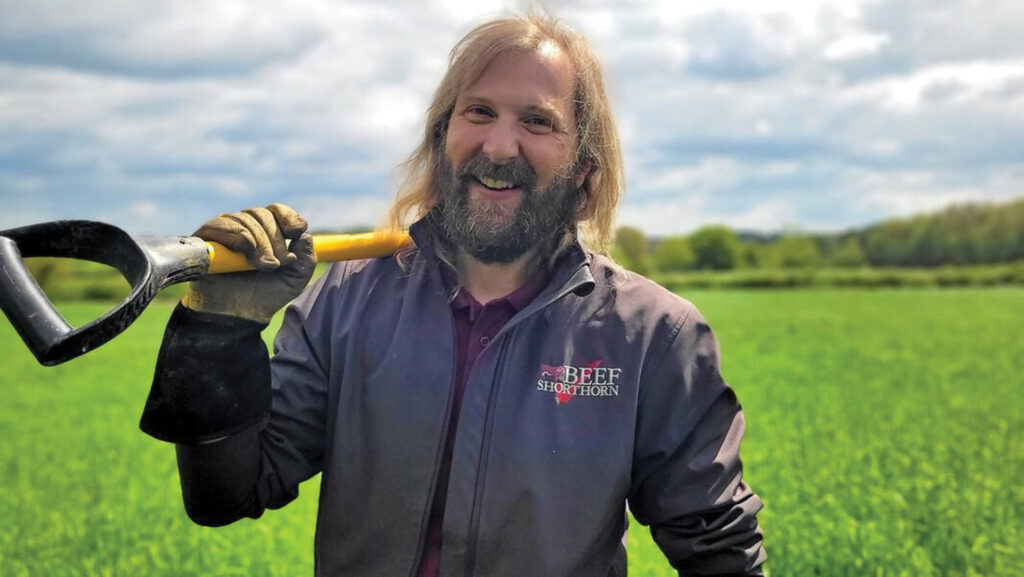
Fraser Hugill © North York Moors National Park Authority
“Thanks to its deeper and more complex root system, it also remains green and growing when water is scarce.
“That root system also helps with better water infiltration and carbon capture – things that we are measuring in this project with the help of researchers.”
A longer-lasting grass species, cocksfoot does not require re-seeding as often and grows earlier in the season, while needing less fertiliser, he adds.
“It could extend our grazing season and keep costs down, as well as helping our farms deal with unpredictable weather.”
The project is in its first year and has been funded in part by a Farming in Protected Landscapes grant.
“If it doesn’t work, it doesn’t matter,” says Fraser. “We are taking a risk, but we all have to be prepared to look at ways that will improve our resilience.”
